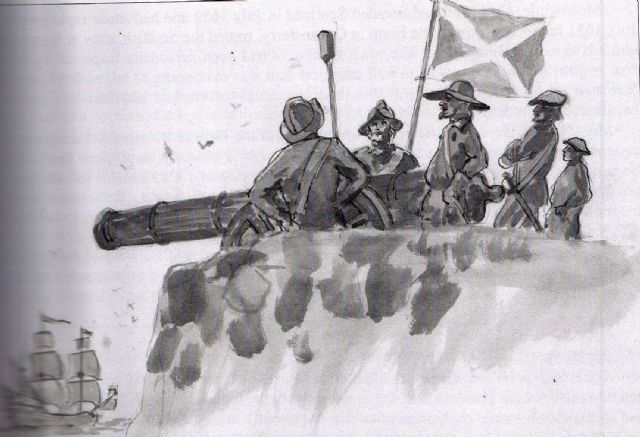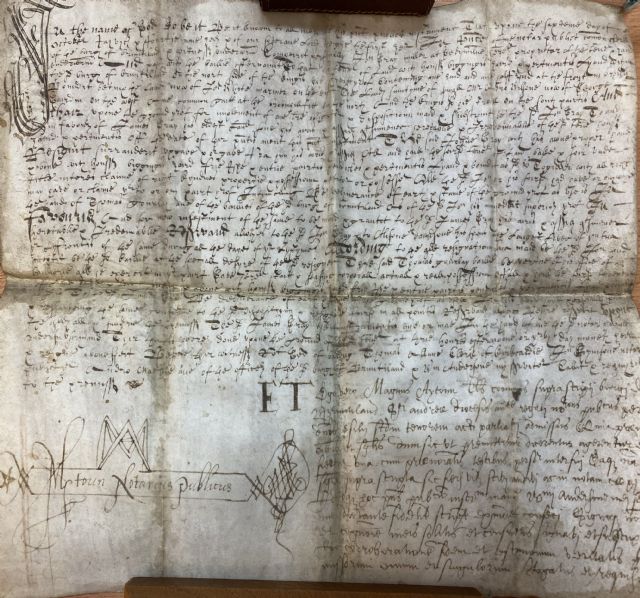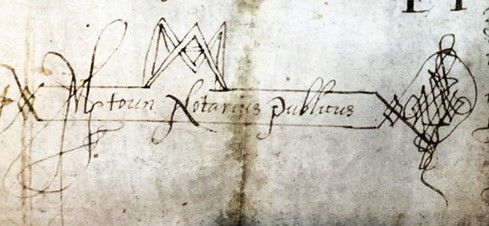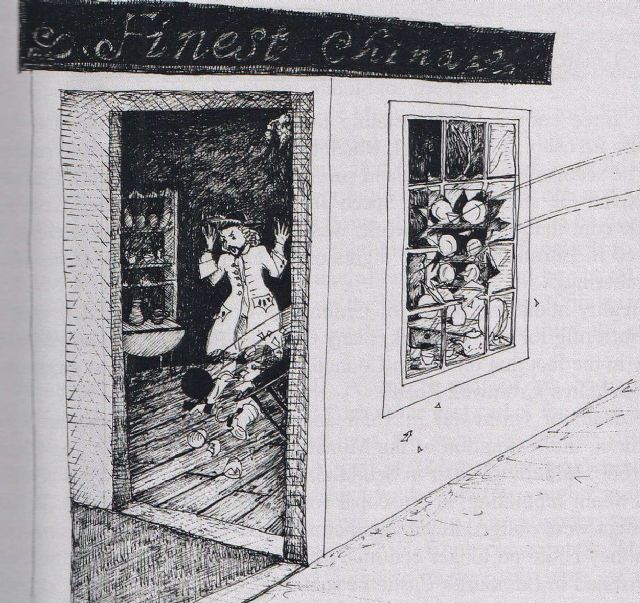1649 Document- Transfer of Land
Transcribed by Gill Patterson & Andrea Morrison
Document in a Historical Context
At the time of this document being written, Scotland was in the middle of the Covenanting wars. Burntisland was a strong supporter of the National Covenant. However, the Scots were becoming disillusioned by the power of Oliver Cromwell in England. Earlier in the year that this document was signed, the English parliament executed Charles I. the Scots immediately proclaimed his son Charles II, King of Scots. This put them in conflict with the army of Oliver Cromwell, who invaded Scotland the following year. In this period, Burntisland was an important seaport both for embarking troops and supplying the armed forces. The town was in the process of preparing for invasion and was being heavily fortified. Oliver Cromwell occupied the town just over eighteen months later, his garrison was to stay for the rest of the decade. GMcL.

Burntisland troops prepare for arrival of Oliver Cromwell by Douglas Gray

1649 Document- Transfer of Land

Signature of Magnus Aytoun, Notary Public
Batch 3/Doc 01 1649. Sasine John Gray to James Gray (witnessed by Magnus Aytoun, Notary public)
Synopsis
This deed is a Sasine dated 16 October 1649, a few months after the execution of Charles i. Charles II had been declared king by the Scottish Parliament, hence the reference to the first year of “our sovereign Lord’s reign”. John[1] Gray, Miller at Ged’s Mill, is transferring ownership of a piece of land, with houses, buildings, yard and pertinents, to his eldest lawful son James Gray. The land is in the Burgh of “brinitiland” (Burntisland), between the High Street and the foot of Broomhill, between land owned by John White, mariner, on the east and George Gairden on the west side (formerly belonging to the late Andrew Wilson). The deed refers to the old custom of “deliverance of earth & stone of the ground thereof” in the presence on the site of Baillie Thomas Gourlay. John Gray and his wife Alison Davidson are granted “liferent” meaning they can continue to stay in the property until they both die. The document was witnessed by Robert Ged of Badrig, Thomas [Allane], Clerk in Kirkcaldy, John Simson, Notary in Kirkcaldy. Also present were Andrew Mackie, (one of the officers in Burntisland}; William Anderson, servant of Magnus Aytoun; and the Notary Public Magnus Aytoun who authorised the document with his special signature.
[1] Spelling in document varies – Jon or Johne
Translation from Secretary Hand (with punctuation added and unknown words in square brackets)
1 In the name of God so be it. Be it known to all men by this present public instrument that upon the sixteenth day of
2 October jajvi & forty nine years (1649) & of our sovereign Lords reign the first year[1] In presence of me notary public common clerk
3 of the burgh of Burntisland[2] & witnesses underwritten appeared personally John Gray miller at Ged’s Mill [3] heritable proprietor of the tenement yard
4 underwritten. And passed with the bailies after named to that tenement of land with houses biggings yard & pertinents lying within
5 the said burgh of Burntisland on the north side of the kings high street thereof containing a [rood][4] and a half [rood] at the front in breadth
6 bounded between the land now of John White mariner on the east, the land sometime of the deceased Councillor Andrew Wilson now of George
7 Gairden on the west, and common gait at the broomhill foot on the north and the kings said high street on the south parts. And
8 there upon the ground thereof for implement of a [ ] obligation & disposition made & subscribed by the said John Gray to and
9 in favour of James Gray his eldest lawful son his heirs & assignees whatsoever heritable & irredeemable of the said tenement house
10 yard & pertinents of the date of this present[5] concerning[6] this present instrument. The said John Gray with his own proper hand
[1] Charles II was King of Scotland 1649-51, deposed by Cromwell
[2] Written as “Brintiland”
[3] Spelling in document “Gedismilne”
[4] looks like “quid” – but is most likely “rood”, Scots square measurement. 1 acre = 4 roods
[5] This word is an abreviation – probably meaning “of this present date” i.e. “today’s date”
[6] Anent – concerning, before (DSL)
11 resigned surrendered gave up & or gave from him his heirs & assignees All and hail the foresaid tenement of land back & fore under
12 & above with houses biggings yard free exit[1] & entry parts pendicles [2] & pertinents lying and bounded as said. Together with all right
13 title interest claim of right kindness[3] property & possession proprietor or possesser which the said John or his foresaids had have or anyways
14 may have or claim thereto or any part thereof in time coming . By deliverance of earth & stone of the ground thereof as use is. In
15 the hand of Thomas Gourlay one of the bailies of the said burgh of Burntisland as of the said John his immediate superior thereof In
16 favour and for {new][4] infeftment[5] of the same to be made and granted to the said James Gray his heirs & assignee whatsoever
17 heritable & irredeemably reserving the right always to the said John Gray & to Alison Davidson his spouse the longest liver of the two
18 their liferent of the same during all the days of their lifetime according to the [which] resignation so made by the said John and
19 [ ] by the said bailie at the special desire of the said resigner. The said Thomas Gourlay bailie by virtue of his office of
20 bailiery which he [exerted] in that part gave [ ] state & sasine corporal actual & real possession of all & hail the foresaid tenement
21 of said land back & fore under & above with house biggings yard free exit and entry parts pendicles & pertinents lying [ ]
22 as said is to the said James Gray by deliverance of earth & stone of the ground thereof as before. From his given land personally [ possessed ][6]
[1] Word in document is “ish” = variant of “isch” – exit, egress, act of going out. (DSL)
[2] Pendicle – a piece of land regarded as a subsidiary to the main estate (DSL)
[3] “kyndness” – the prescriptive right of a “kindly” occupier to his holding or tack (DSL)
[4] Or “now”
[5] Infeftment-- “the investing of a new owner with a real right in or legal possession of land” Concise Scots Dictionary.
[6] Not sure about this. An abbreviated word – looks like “put”

Cromwell's first shot hits the Provosts shop. by Keli Clark
This is a rather tongue-in-cheek and historically inaccurate portrayal. Porcelain china had not been introduced at this time and Burntisland was also without a Provost.

